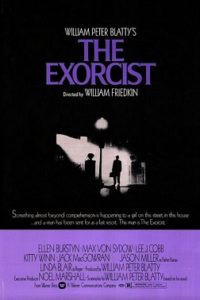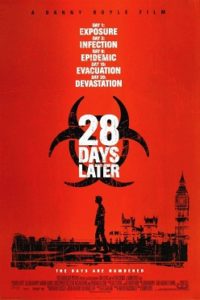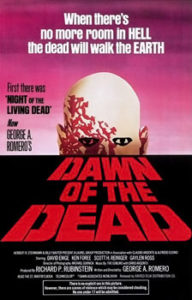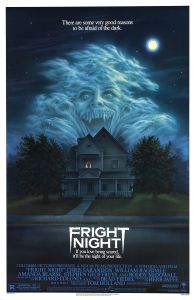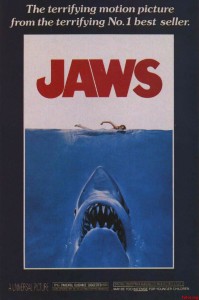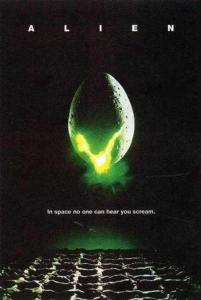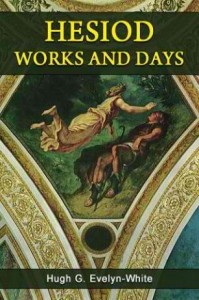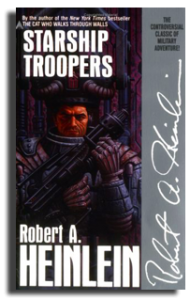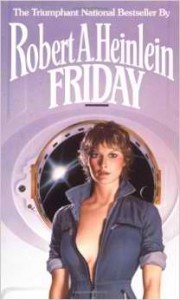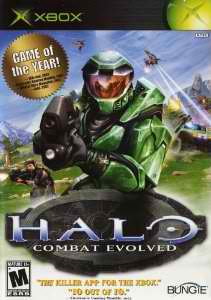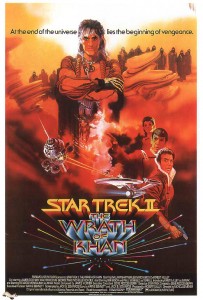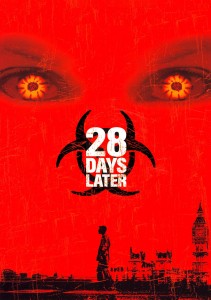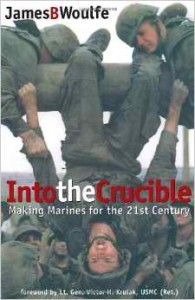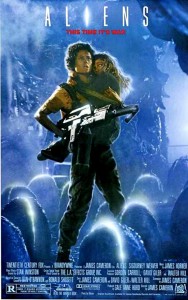Happy Halloween, True Believers!
In the spirit of the holiday, I figured my blog this week should be a top five or top ten list for my favorite horror films. I put a list together—and remembered I’d done this in 2014. My list has changed a bit since then, but all five of those films are still on it in a different order. So, the entries with asterisks after the title were copied from the previous blog. Regardless, enjoy the new ones! Admittedly, it was hard to rank many of these, since they’re all great films. They’d make excellent additions to your Halloween festivities. Enjoy!
It might surprise you that I have this low on my list. It’s usually regarded as one of the scariest films ever made. (AFI would say that). My appreciation, though, has more to do with its place in history than anything else. I wasn’t allowed to see it growing up because it so terrified my mother as a teen that she forbade her kids to see it. When I finally did watch it, I saw why it’s become an icon of not only horror films but cinema. This is tale of a Catholic priest struggling with his faith while trying to save a little girl (Linda Blair) possessed by a demon. It’s simple, profound, and terrifying. Younger viewers spoiled on CGI laugh at the special effects, which is a disappointment because I think they hold up. It doesn’t help that the film has been parodied to the point that its potency is reduced on the younger crowd. For those who believe the spiritual warfare dramatized in this film is real, or those who have any sort of empathy, this is one of the greatest horror films in movie history.
#9: Suspiria (1977)
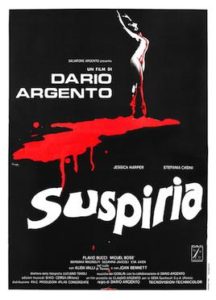 Amongst fans of Italian horror films, the name Dario Argento ranks as one of the greatest in the genre. The visionary auteur creates unique, mesmerizing horror movies, and Suspiria is considered to be his masterpiece. This story of an American dancer who joins a German ballet school that seems to be a front for a sinister force after a series of heinous murders is high on style. Argento’s cinematography and incredible use of color creates an unnerving atmosphere and a rich visual language full of symbolism. One of Argento’s trademarks is the use of creepy rock music created by the band Goblin, which makes the film like a commercial haunted house. If you’d like to see a film that feels like an Edger Allan Poe story, check this out!
Amongst fans of Italian horror films, the name Dario Argento ranks as one of the greatest in the genre. The visionary auteur creates unique, mesmerizing horror movies, and Suspiria is considered to be his masterpiece. This story of an American dancer who joins a German ballet school that seems to be a front for a sinister force after a series of heinous murders is high on style. Argento’s cinematography and incredible use of color creates an unnerving atmosphere and a rich visual language full of symbolism. One of Argento’s trademarks is the use of creepy rock music created by the band Goblin, which makes the film like a commercial haunted house. If you’d like to see a film that feels like an Edger Allan Poe story, check this out!
I had to include this since it was an influence on my first novel, Pandora’s Box. It’s still one of the most unique zombie films ever made. Although, I’d argue that it almost doesn’t count as a zombie flick, at least in the traditional sense. This follows a young man (Cillian Murphy) who wakes up after a 28-day coma to find London empty—except for vicious people infected with a virus that’s essentially rabies on steroids. (For those who’ve read my novel, you’ll understand why I felt like the filmmakers beat me to one of my ideas in the novel). Well before the Infected appear, the film plays on the fear of isolation with an empty city. The characters are the film’s greatest strength, something often lacking in horror movies. Interestingly, three endings were filmed and one considered in the scripting phase. Two of them were shown theatrically. The one used originally in the film is best, I think, since it’s the happiest. (Tragic endings are a bit overused in the genre). Check it out if you’re looking for a taste of British horror.
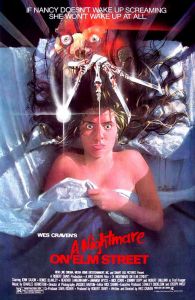 #7: Nightmare on Elm Street (1984)*
#7: Nightmare on Elm Street (1984)*
Wes Craven’s classic is a variation of the then popular (and overused) slasher movie: a killer who attacks victims in their dreams. Freddy Krueger became an icon with his trademark sweater, hat, claws, and dark wit. The film has an otherworldly quality to it thanks to the dream sequences. Plus, in a rare treat, it features a strong heroine who refuses to become Freddy’s next victim. Interesting bit of trivia: this is Johnny Depp’s first movie. He plays the heroine’s boyfriend.
George Romero’s Night of the Living Dead was a game-changer in 1968, but it’s remembered more for its place in history than anything else. Romero’s first sequel is a classic because it’s a great film. Set in the early years of the zombie apocalypse, a group of survivors take refuge in a mall—until the zombies manage to get in. The characters and world-building would become the template all other zombie apocalypse movies would copy, but they lacked this film’s potent social satire on consumerism. Tom Savini’s gore effects get a lot of attention, but they serve the larger whole. The Italian version put together by Romero’s friend Dario Argento has a score by Goblin (the original film had no soundtrack), which actually complements the film well. A must-see classic for any horror/zombie fan!
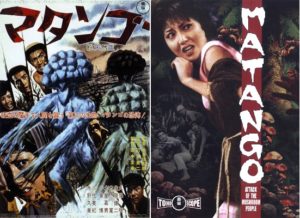
#5: Matango (1963)
As the co-creator and season one co-host of Kaijuvision Radio, I almost feel obligated to include this Japanese classic. (My collaborator, Brian Scherschel, will be covering it in the podcast’s current season). Crafted by the creative team behind Toho’s original Godzilla series, this trippy film was made in the tradition of 1930s Universal horror movies. I can best describe it as a story that begins like Gilligan’s Island (though it predates that show), turns into Lost, and ends like The Twilight Zone. Inspired by the short story “A Voice in the Night” by William H. Hodgson (though it’s equal parts Lord of the Flies), it follows a group of shipwrecked rich people on a bizarre island who are beset by mushroom creatures. The film was released on American TV under the unfortunate title Attack of the Mushroom People, which undoubtedly gave a bad impression. The creature effects might be considered quaint by today’s standards, but the real horrors are the characters who slowly turn on each other as the film progresses, giving into whatever vices they suffer from. The ending leaves the viewer with a gut punch of a social commentary. It’s a bit hard to find, but well worth seeing!
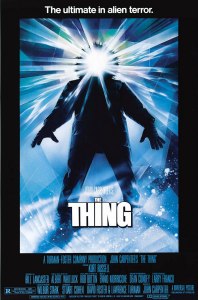 #4: John Carpenter’s The Thing (1982)*
#4: John Carpenter’s The Thing (1982)*
This terrifying remake of a ‘50s B-movie is one of the smartest horror films I’ve ever seen. It has none of the stereotypical idiot characters. While it does have gross gore and freakish creatures, the real terror comes from the isolated Antarctic location and the paranoia that rips a tightly-knit science team apart as a shapeshifting alien organism takes over each of them.
A horror/comedy that is both genuinely funny and scary, it is a film with a perfectly simple concept: a teenage boy thinks his new next-door neighbor is a vampire, but no one believes him, so he desperately seeks help from a washed-up horror movie actor. The best characters aren’t the teenage hero, but the old actor–played by Roddy McDowall of Planet of the Apes fame—and the vampire (played by Chris Sarandon). The former is a cynical yet likable fellow with sharp, sarcastic wit (who’s not afraid to take jabs at the current horror movie trends), while the latter is a man whose often mesmerizing charm masks a powerful evil. Add in a cat-and-mouse game being played by the desperate teenage boy and his undead nemesis, and you have a fun (and frightening) night out.
The movie that launched director Steven Spielberg’s career, created the summer blockbuster, and arguably inspired Sharknado. While based on the novel by Peter Benchley, it’s one of the rare times, I’d say, that the movie is better than the book (the novel was padded with an unnecessary subplot where Brody’s wife has an affair with Hooper). My favorite character is Quint, played by the scene-stealing Robert Shaw, a grizzled sailor with a Captain Ahab complex. He might be mad, but you can’t help but like his gruff attitude. Spielberg famously kept the anomatronic shark’s screen time to a minimum because he thought it looked fake. By doing so, he increased the film’s tension and gave the monster a stronger presence. Throw in classic lines like, “We need a bigger boat!” and you have an instant classic.
“In space, no one can hear you scream.” (One of the best taglines ever!)
If I had to choose a film that would be the blueprint for crafting the perfect horror movie, it would be Ridley Scott’s classic tale of gothic science fiction. It has powerful atmosphere, a terrifying and unique monster, and strong characters (including a countercultural heroine). The set design is incredible. The Nostromo feels both safe and claustrophobic. It plays upon multiple types and levels of fear, including, shadows, the unknown, and even rape. And it includes only one truly gory scene, but it both shocks the audience and adds to the story. It’s too bad that only one of its sequels, James Cameron’s Aliens, even comes close to equaling it.
Honorable Mentions: The Universal Horror Series (too many to include or choose), Night of the Living Dead (1968), Halloween (1978)
What are some of your favorite horror movies/stories/authors?

